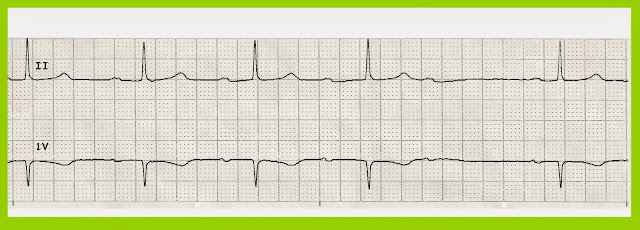Practice EKG Rhythm Strips 217

Identify the following rhythms. 1. 2. 3. 4. 5. Answers 1. 2nd degree heart block type II The rhythm is irregular. The rate is 30/min. There are upright, uniform P waves present but not all of them are associated with a QRS complex. A non-conducted P wave follows each QRS complex. The PR interval is constant on the conducted P waves. There are two PVCs present, the 1st complex and the 4th complex. PR: .36 sec, QRS: .12 sec, QT: .48 sec. Interpretation: 2nd degree heart block type II 2. Atrial flutter The rhythm is irregular with a rate of 90. Flutter waves are present. No ectopic beats are seen. PR:---, QRS: .12 sec, QT:.44 sec. Interpretation: Atrial flutter. 3. Atrial paced The rhythm is regular with a rate of 75/min. A small P wave follows the atrial pacer spike. No ectopic beats are seen. PR: .28 sec, QRS: .12 sec, QT:



